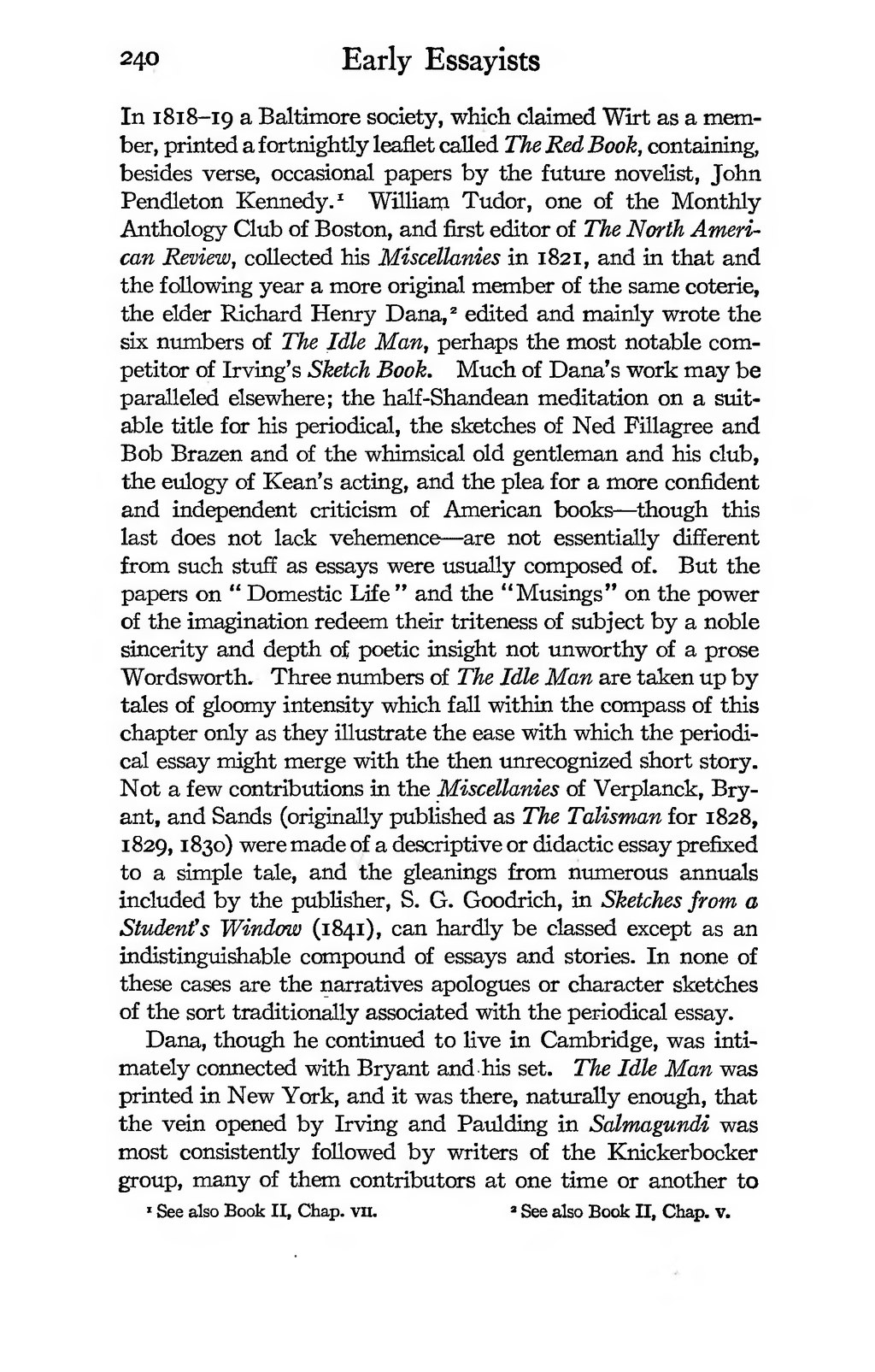In 1818-19 a Baltimore society, which claimed Wirt as a member, printed a fortnightly leaflet called The Red Book, containing, besides verse, occasional papers by the future novelist, John Pendleton Kennedy.[1] William Tudor, one of the Monthly-Anthology Club of Boston, and first editor of The North American Review, collected his Miscellanies in 1821, and in that and the following year a more original member of the same coterie, the elder Richard Henry Dana,[2] edited and mainly wrote the six numbers of The Idle Man, perhaps the most notable competitor of Irving's Sketch Book. Much of Dana's work may be paralleled elsewhere; the half-Shandean meditation on a suitable title for his periodical, the sketches of Ned Fillagree and Bob Brazen and of the whimsical old gentleman and his club, the eulogy of Kean's acting, and the plea for a more confident and independent criticism of American books—though this last does not lack vehemence—are not essentially different from such stuff as essays were usually composed of. But the papers on "Domestic Life" and the "Musings" on the power of the imagination redeem their triteness of subject by a noble sincerity and depth of poetic insight not unworthy of a prose Wordsworth. Three numbers of The Idle Man are taken up by tales of gloomy intensity which fall within the compass of this chapter only as they illustrate the ease with which the periodical essay might merge with the then unrecognized short story. Not a few contributions in the Miscellanies of Verplanck, Bryant, and Sands (originally published as The Talisman for 1828, 1829, 1830) were made of a descriptive or didactic essay prefixed to a simple tale, and the gleanings from numerous annuals included by the publisher, S. G. Goodrich, in Sketches from a Student's Window (1841), can hardly be classed except as an indistinguishable compound of essays and stories. In none of these cases are the narratives apologues or character sketches of the sort traditionally associated with the periodical essay.
Dana, though he continued to live in Cambridge, was intimately connected with Bryant and his set. The Idle Man was printed in New York, and it was there, naturally enough, that the vein opened by Irving and Paulding in Salmagundi was most consistently followed by writers of the Knickerbocker group, many of them contributors at one time or another to
